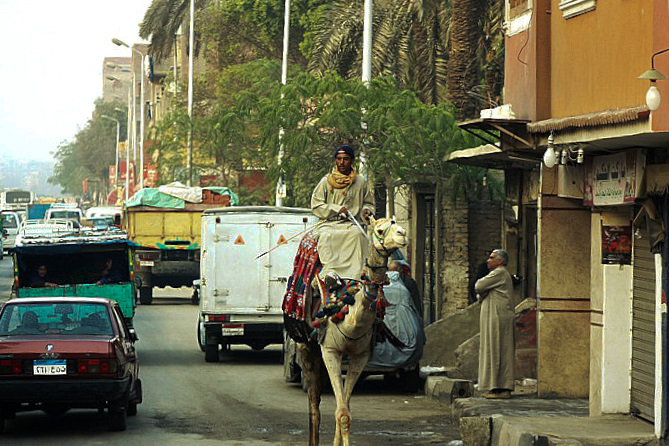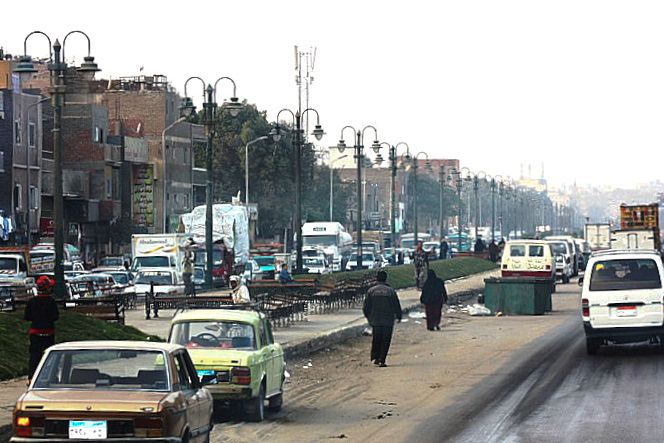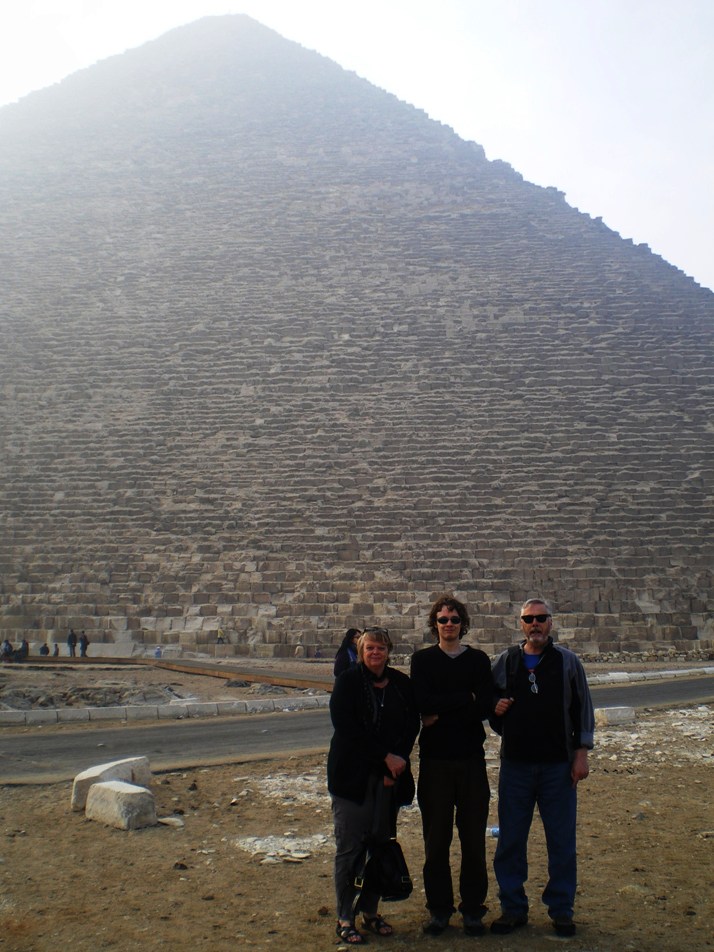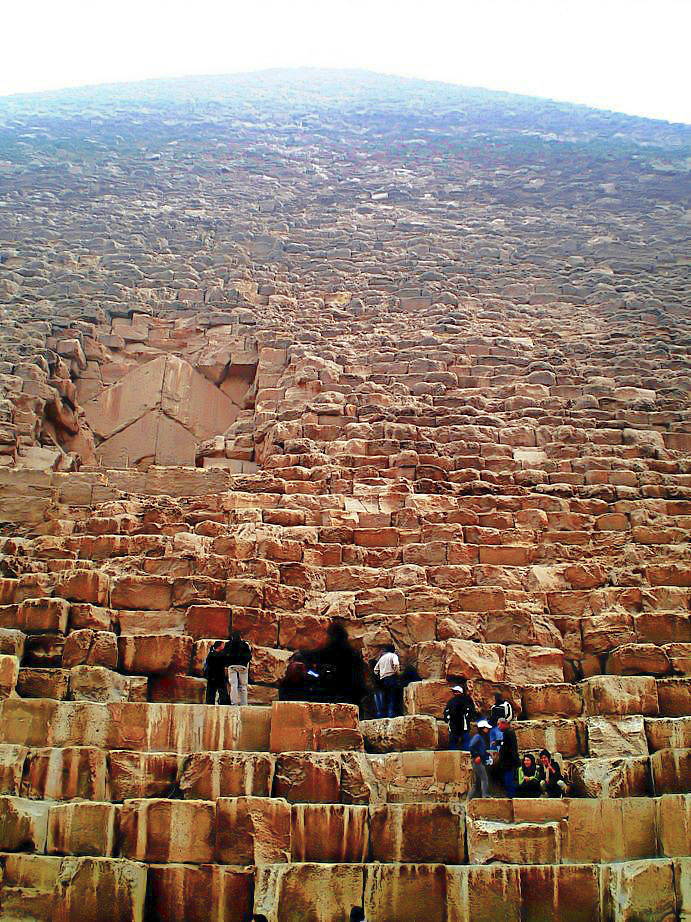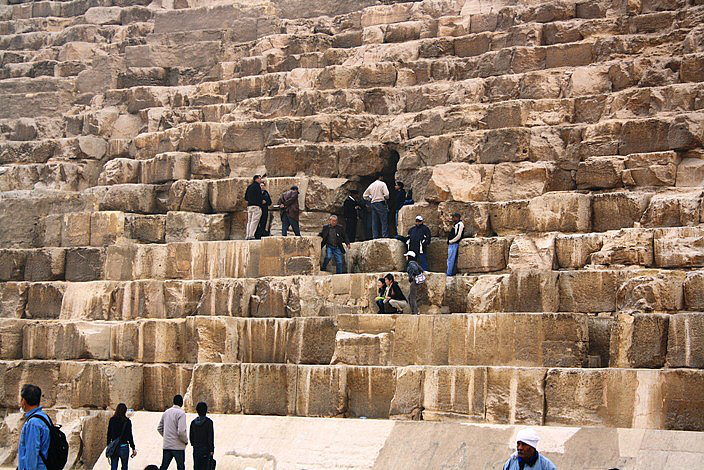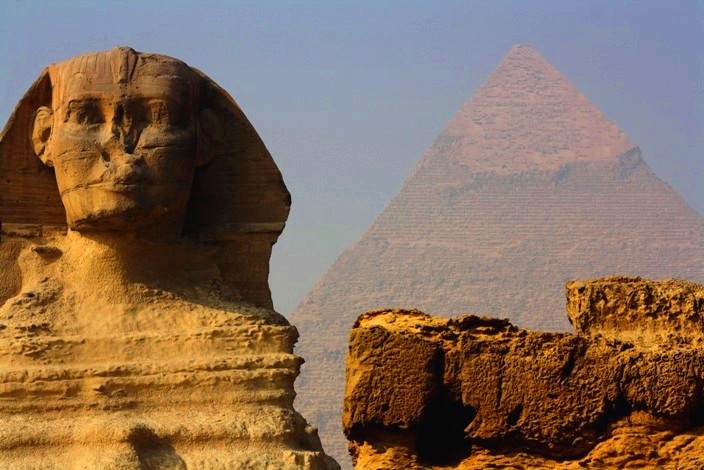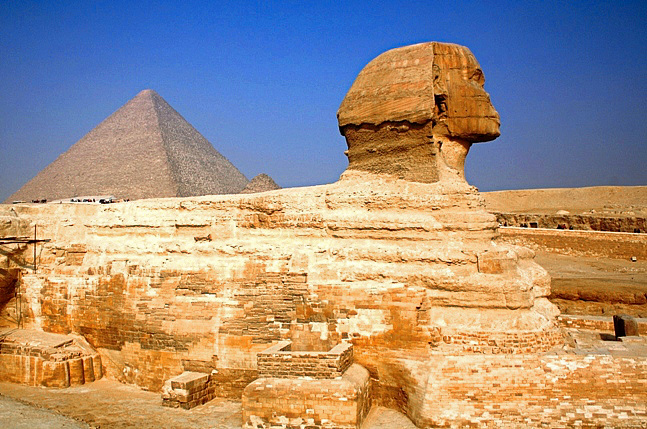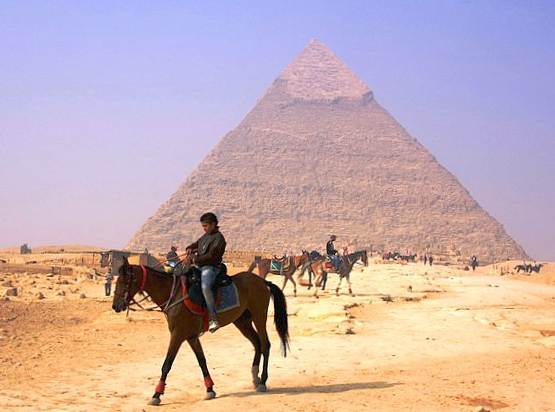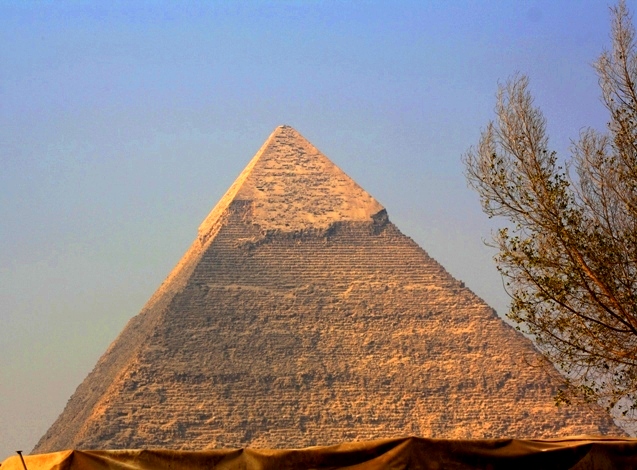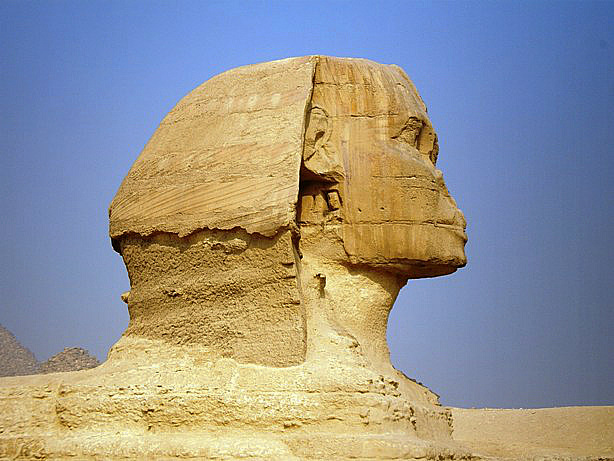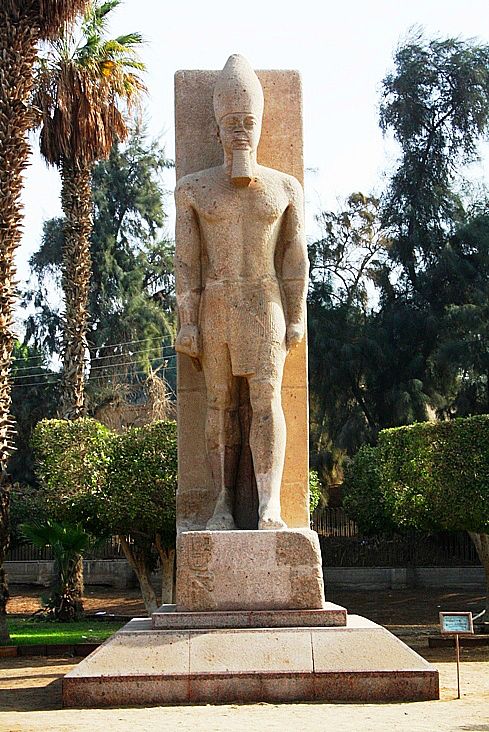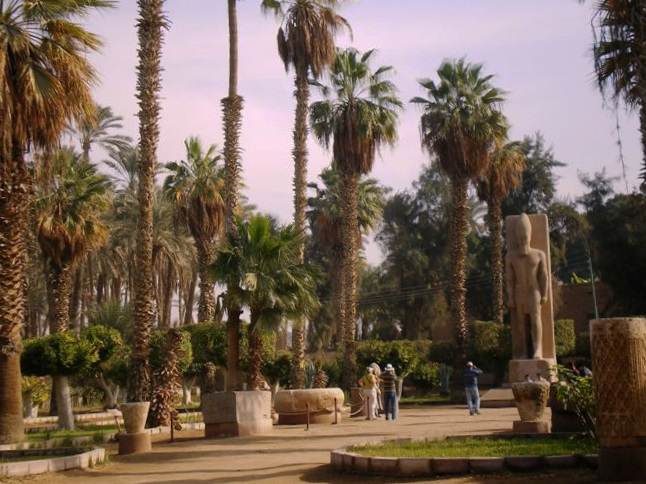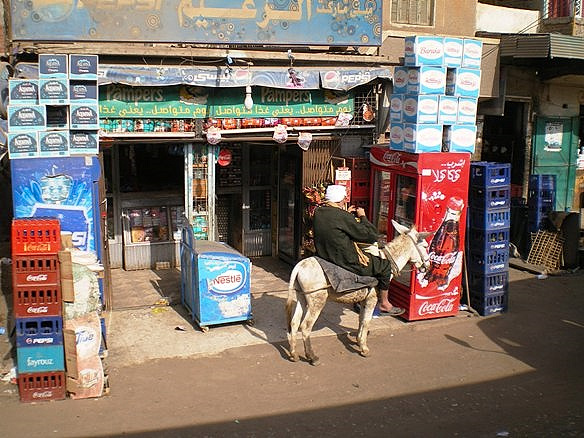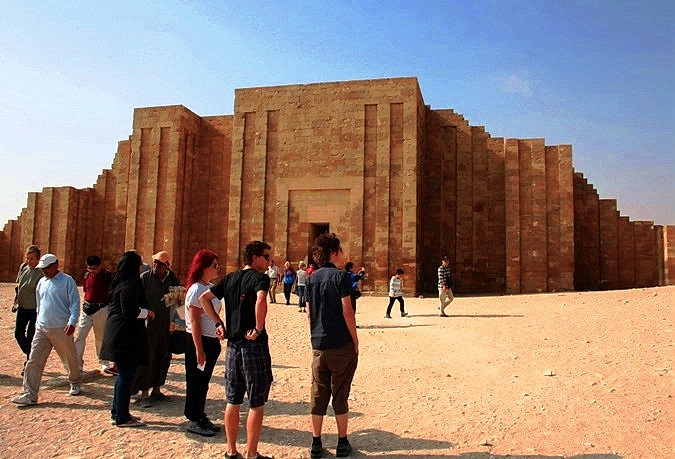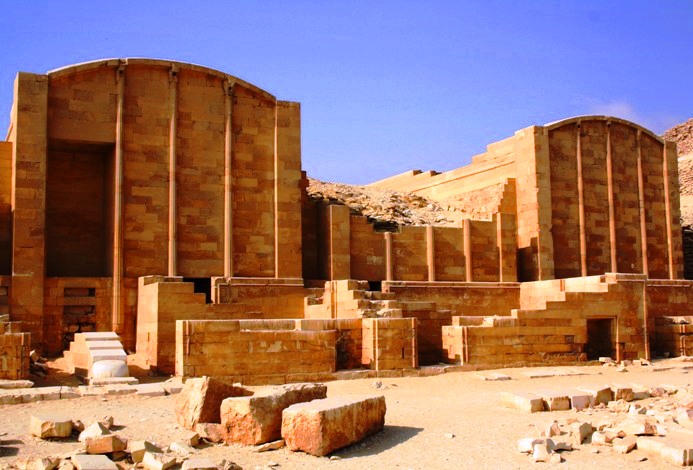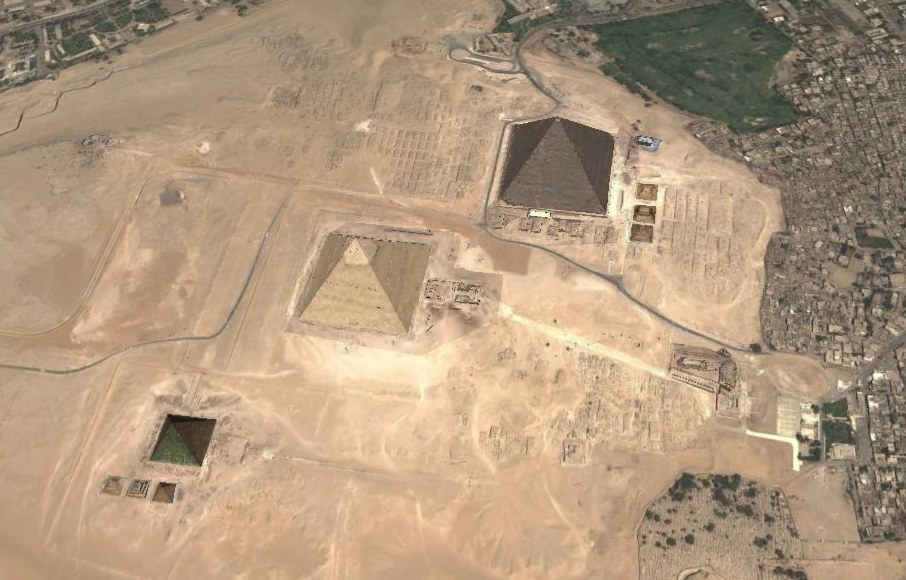
The creeping urbanisation of Giza from Google Earth. The Sphinx, middle right, looking towards a Pizza Hut watches as the desert disappears
beneath concrete, asphalt and wind blown litter.

The largest of all and the earliest at Giza, the Pyramid of Khufu (the Great Pyramid) is at top right rising 147 meters above the plateau. Its 2.3 million stone blocks weigh from 2.5 to 15 tons. The first up-close sight of it from the drop off point (the asphalt circuit at the top of the picture) justifies the whole trip - it is truly gobsmacking. Photos cannot do justice to its size - close up and only bits fit into frame, far away and the sense of its massivenes is lessened.
The equally impressive Pyramid of Khafre (centre) with the remaining casing stones visible at its peak is in the middle, and the Pyramid of Menkaure, the smallest of the big 3 is at bottom. 6 much smaller Queens' pyramids can also be easily recognised. Building bloody big pyramids ran in the family - Khufu was Khafre's dad and Menkaure's grand-dad. Khufu's own father Sneferu is responsible for the other 2 huge pyramids - the Red Pyramid and the Bent Pyramid at Dahshur about 40 kilometers further up the Nile.
The entrance that leads up to the Kings Chamber in the core of the Pyramid of Khufu is the Robbers' Tunnel dug by workmen employed by Caliph al-Ma'mun around 820 AD. Even though the chamber is relatively small and claustrophobic and empty except for a granite sarcophagus, the spookiness of being in the middle of that huge mass makes the steep, squeezy climb worthwhile.
There are famous and iconic destinations that can disappoint; not living up to the expectations that have grown from the hyperbole and superlatives that are applied to them. The Great Pyramids do not disappoint.
The main drag at Giza - the highway connecting Alexandria to Cairo is crowded, dirty and noisy. The 2 big pyramids' peaks loom up over the roofs of the buildings while a channel running between the 2 sides of the highway could be imagined as once being a tributary of the Nile used to transport the huge blocks for the Pyramids' construction. Today it's choked with garbage, occassional glimpses of water appearing between the detritus of modern Giza.
The first of the pyramids, the Stepped Pyramid of the pharaoh Djoser was built in the 27th century BC at Saqqara near the then capital of Memphis. While there were several pyramids constructed in the intervening years, the next ones of real note are the Bent Pyramid and the Red Pyramid, both constructed by the minions of the pharaoh Sneferu at Dashur, close by and visible from Saqqara.
Snef was a bit of an over-achiever in the pyramid building game having also put up the first non-stepped pyramid, at Meidum, as his first attempt. It is thought possible that old Snef remains undiscovered somewhere in the midst of the Red Pyramid. He passed his pyramid-building genes on to his son Khufu, the brand owner of the Great Pyramid at Giza, and his grandson Khafre – he of the second-biggest pyramid you ever will see.
The pyramid fields (containing 118 - 138 pyramids depending on your sources) stretch along the desert edges abutting the green western bank of the Nile, from the southern perimeter of Cairo at Abu Rawash and Giza to Meidum 90 kilometres to the south. While Giza is the must-not-miss main attraction, Saqqara, Abū Ṣīr and Dahshūr have significant clusters of pyramids from the monolithic such as the Red Pyramid and Bent Pyramid to those that are now not much more than mounds of rubble.
Memphis, capital of ancient Egypt was founded around 3,000 BC and was an important centre during much of Egyptian history. About 24 km south of Cairo and other than the small, mostly outdoor museum with a Statue of Ramesses II, a colossal 3,200-year-old figure of Ramesses II, 11 meters tall, made from red granite, and weighIng 83 tons. Apart from some other museum artifacts there's not much of ancient Egypt that is still evident in Memphis, and not much of anything else either apart from small shops and stalls near the museum amid Mit Rahina, modern Egypt's version of a small country town. Various temples and palaces once abundant at Memphis have been mostly destroyed, much of their contents distributed about the place. It's still well worth visiting as close by where the fertile Nile river banks give way to desert in an abrupt line are the necropolises in the pyramid fields of Saqqara with Abu Sir and Dahshur not very far away where the huge Bent Pyramid and Red Pyramid are located.
